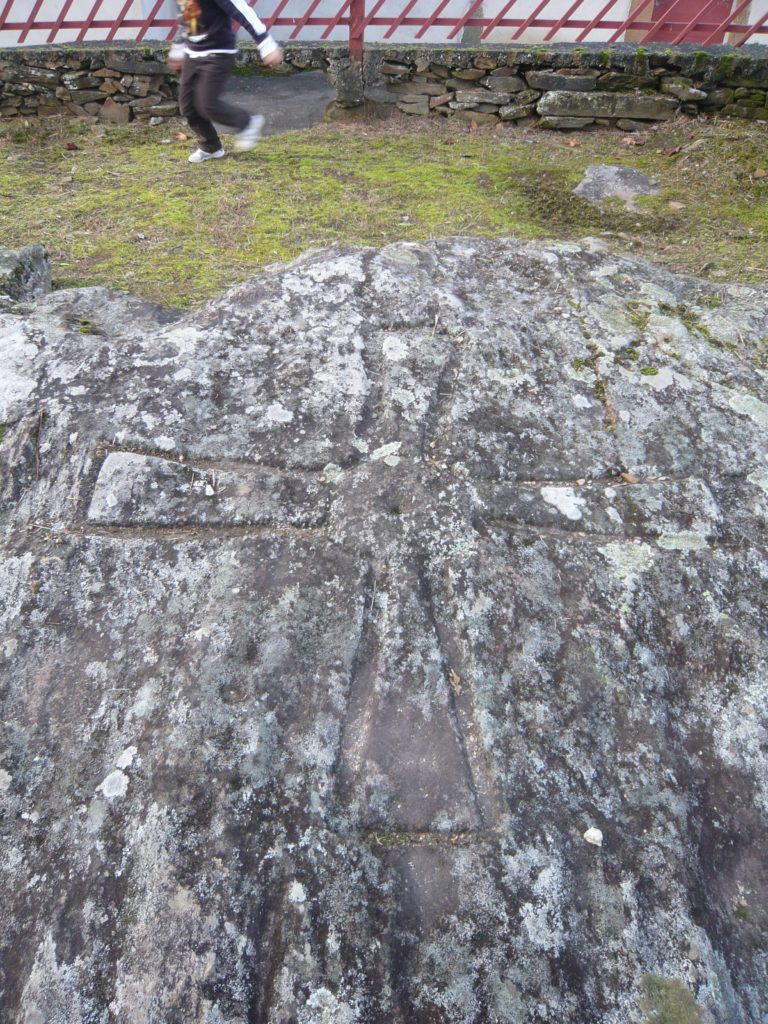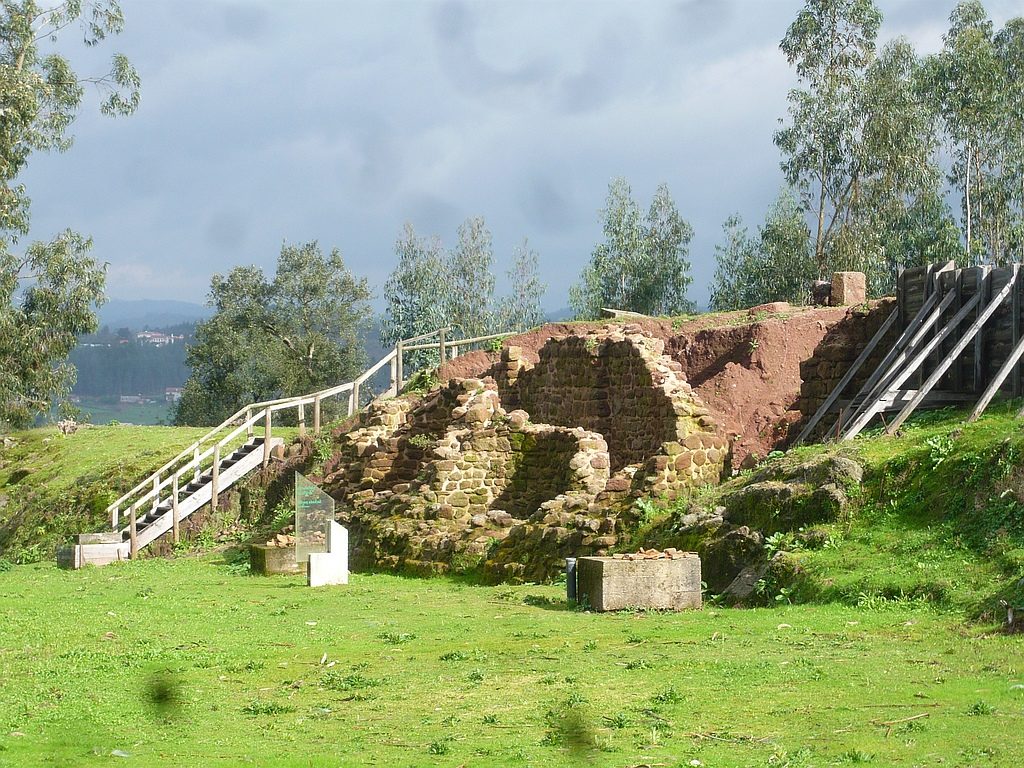(Originally published on September 12, 2013)

The bridge today 
Cushioned ashlars
«Ponte de Barreiros», also known as «Ponte da Azenha» or «Ponte de Ronfes» is a bridge over the Leça River between Araújo and Maia, next to the National road EN13; This bridge was part of an old route linking Cale (Porto) to Limia (today Ponte de Lima) crossing the Cávado river in Barcelos, referred as “karraria antiqua” in medieval documents. The way is much older though with many pre-Roman settlements scattered along the way. It takes advantage of the natural corridors that exist between the rivers Douro and Lima and became a secondary road on the Roman network as no milestones were found on this route. The possible explanation for this could be in the fact that it misses the regional capital Bracara Augusta, the focal point for all main routes of the region back then. In medieval times became a major route to Santiago de Compostela and is still today the main way followed by pilgrims. Despite the rampant urbanisation It’s still possible to follow long sections the old way. The bridge suffered several reconstructions and repairs until reaching its present configuration, but the integration of some
cushioned ashlars in the arch staves on the right bank (visible in the photo) proves the reuse of materials from the previous Roman bridge. Coordinates: 41.224711, -8.631817






























